
Subscribe & stay up-to-date with ASF

This summer and autumn has seen near record droughts everywhere from New England’s rivers to those of Newfoundland. Lately some of the rivers in Newfoundland have been filling up with generous rainstorms, but not the rest of the area.
Some of the rivers important to Atlantic salmon have significant flows and levels even in those times of droughts. But some Atlantic salmon populations are in rivers that have little water if the rainstorms of late summer and early fall do not materialize. Many of the Northumberland Strait rivers in Nova Scotia have Atlantic salmon that await the rains in order to make a dash from the ocean to spawning areas. These rivers often do not have the pools, underwater springs or lakes along the way where Atlantic can “stage” before continuing upstream. These Atlantic salmon are imprinted with the need to make the dash.
Same goes for many of the runs in the inner Bay of Fundy, and in a variety of other areas.
Teddy came along this week, and there was hope that it would be the deluge to fill the rivers.
No one wanted TOO much water – where the force of the current can carry heavy loads of silt that can partly clog gills and destroy pre-existing pools.
But Teddy seems to have been on the low side.
On the Northeast Margaree gauge the ultra-low .2 metre height only made it up to a .8 metre level before beginning to drop back.
Teddy failed to have any impact in Maine, where drought conditions remain critical. On the Restigouche and the Matapedia, Teddy had no real impact at all.
There were areas where Teddy did fill the rivers to overflowing.
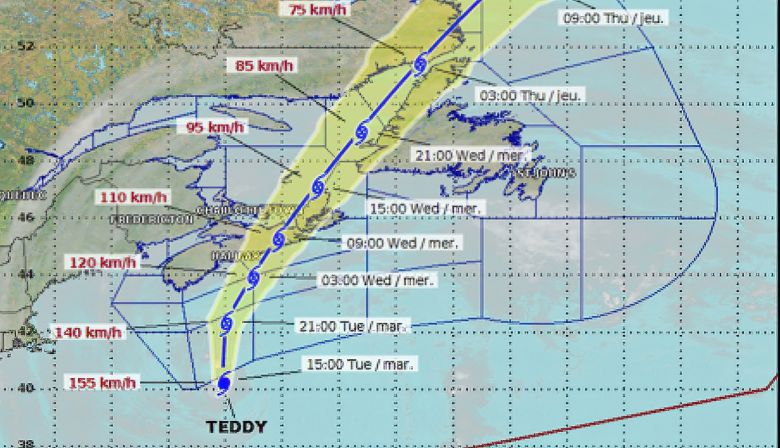
Kris Hunter, ASF Regional Director for Nova Scotia and Prince Edward Island pulled together some observations from contacts across the path of the storm:
Prior to the arrival of Hurricane Teddy, many rivers were at historically low levels. Because of the low water, the fall salmon run had not yet gotten underway, despite many reports of salmon stacking up in the estuaries.
Salmon anglers from across the province were hoping that Teddy would bring significant rain to bring in those waiting fish and kick the fall fishing season into high gear.
As the storm abates it is looking like some anglers may get their wish. The storm tracked as predicted from where it made landfall on the Eastern Shore, over Antigonish, and up through the Northumberland Strait along the west coast of Cape Breton.
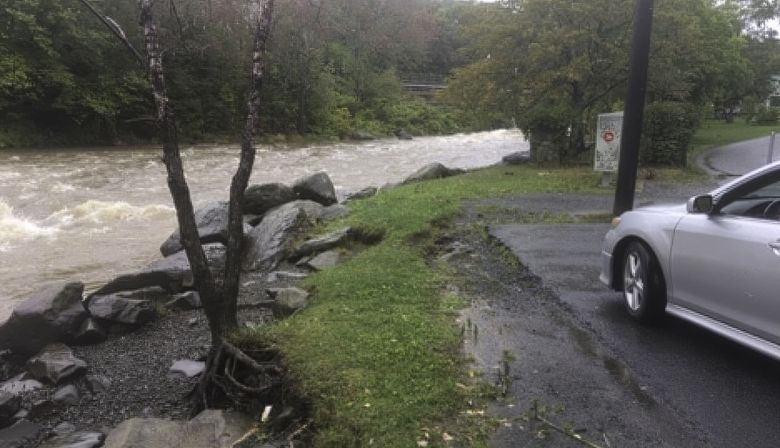
Rivers to the south and west of Teddy’s storm track DID receive significant rain, but those along the track and to its east DID NOT seem to get as much.
As of Wednesday afternoon, the Middle Pictou had risen almost half a meter and the Sackville rose almost a metre, whereas the St. Mary’s, South Antigonish. The Northeast Margaree and the Cheticamp were slower to respond, but by Thurs. noon had come up more than a half metre.
For those looking to fish the Pictou rivers, the Waugh’s, the Wallace and River Phillip it is looking very promising for the weekend. It remains to be seen if the pulse of rain those other rivers received will be enough to draw fresh fish in.
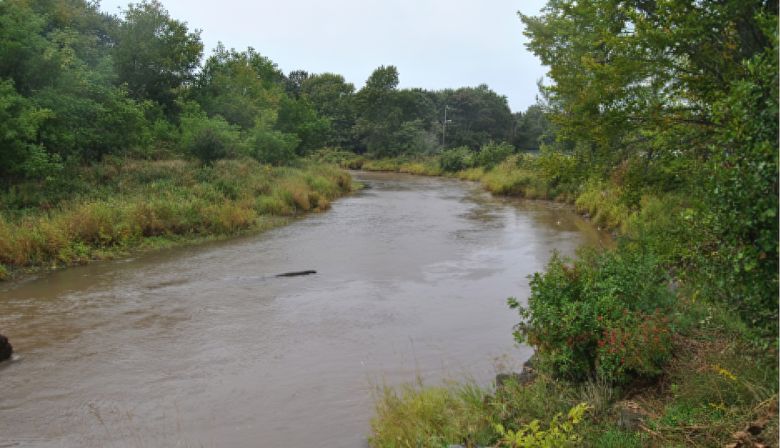
The Margaree River may have cooled down, but the levels are still low.

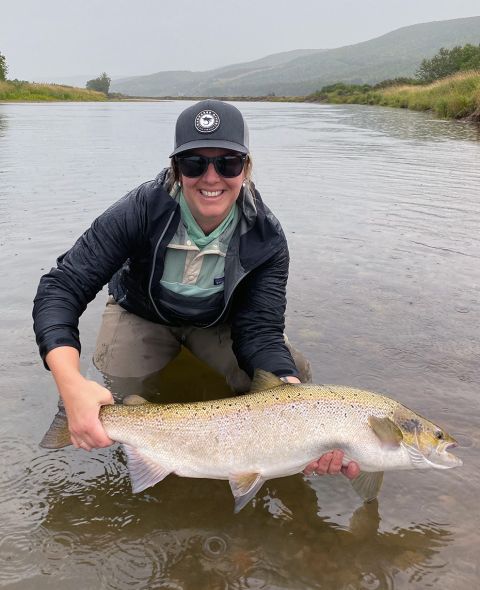
New Inshore Small Research Vessel – called “Whaly Boat”
This new rigid-hull Whaly boat with its drop down bow will soon be put to work by the Nova Scotia Salmon Association off the province’s Eastern Shore to investigate how wild Atlantic salmon and sea trout are using coastal habitat.
The boat was purchased with support from the Pew Charitable Trusts who are supporting ASF’s goal of wild salmon recovery and fisheries restoration in the area.
NSSA biologist, Dr Edmund Halfyard, said the new boat and motor are going to be an invaluable asset going forward. It will be used for water quality sampling in the estuary, estuary habitat mapping, the various acoustic telemetry projects including receiver deployments, and for monitoring the results of the rocky reef habitat restoration. This work, which was partially delayed due to the Covid-19 pandemic, will be fully engaged with this important work. Timing of the acquisition was perfect for preparing working arrangements for gear use.
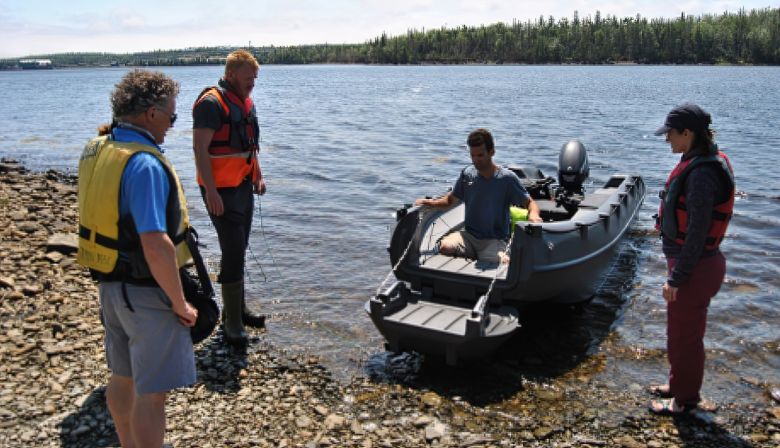
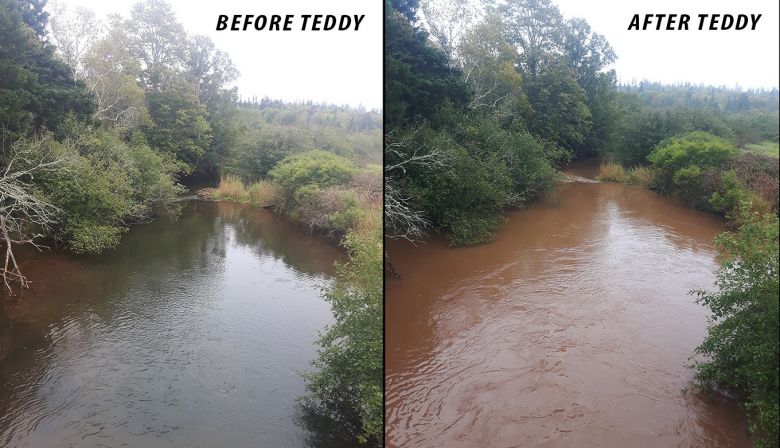
Unfortunately we did not see the rain either. Central regions of the province received around 55mm of rain which tapered off to 25-30mm near the ends.
Most of the rain came as a steady event on Tuesday but with no more in the long range forecast it looks like levels will continue to be low. We should start seeing our fall run of fish entering our rivers in early October.
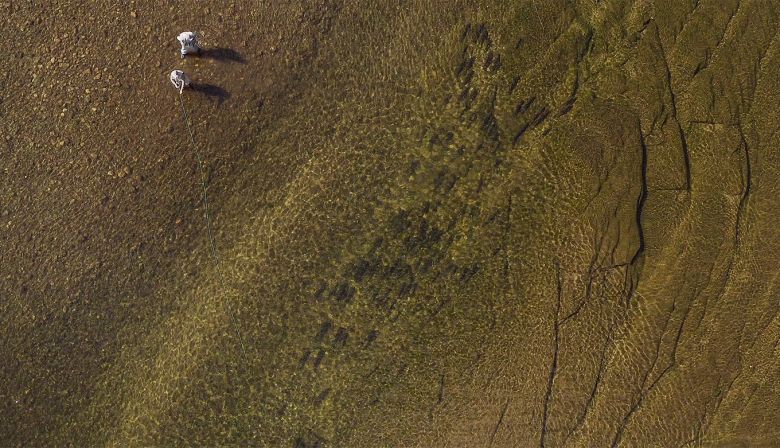
In the Rivernotes of Sept. 18 an update on ASF activity on the Miramichi system was available for download. Click here
Nathan Wilbur, ASF Regional Director for New Brunswick, adds:
Last week construction on the first coldwater enhancement site was completed at Wildcat Brook on the NW Miramichi River. The mouth of the brook was narrowed to increase water velocity from the brook into the river where salmon hold during warm water conditions. McKenzie Brook on the SW Miramichi near Blackville is the next site to be completed before month’s end.
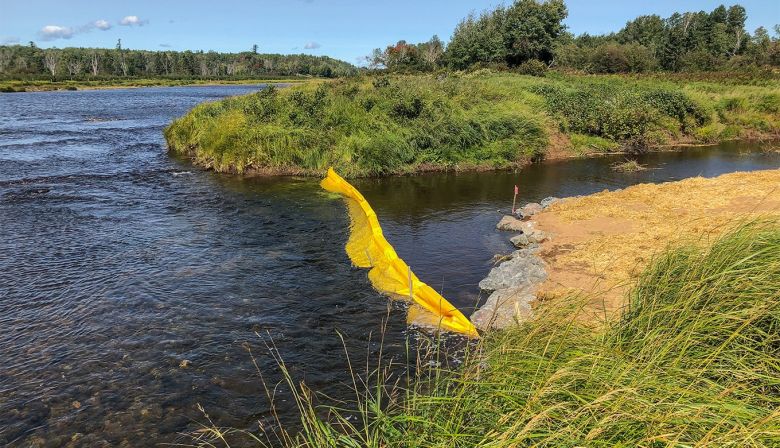
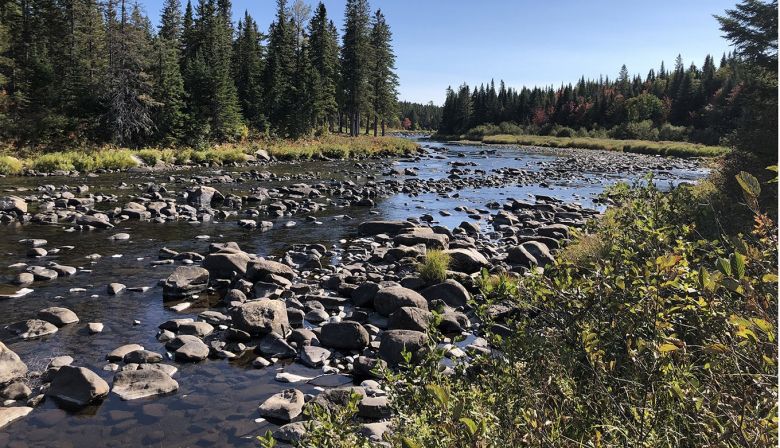
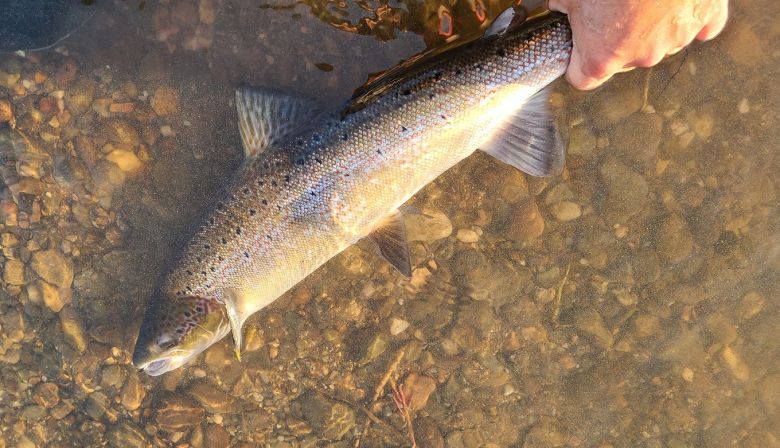
Paul Elson has been out along several of the branches of the Northwest Miramichi recently, especially noting the occasional Atlantic salmon – and extreme low water:
Seeing the odd fish in the pools, but they are glued to the bottom with lockjaw.
Hurricane Teddy brought about 10mm of rain to the Northwest and Little Southwest Miramichi and didn’t get much of a raise, maybe an inch.
I have not seen any new fish entering the river at this point.
I’ve being trying everything to try and raise the fish off the bottom, including fishing #16-18s with no luck in the last two weeks.
I’m certainly not spending a lot of time on the water with these conditions – not like I normally would – and probably will not unless we get significant rain or start hearing of fish being hooked.
Striped bass are being caught in the area of the river near Miramichi City.
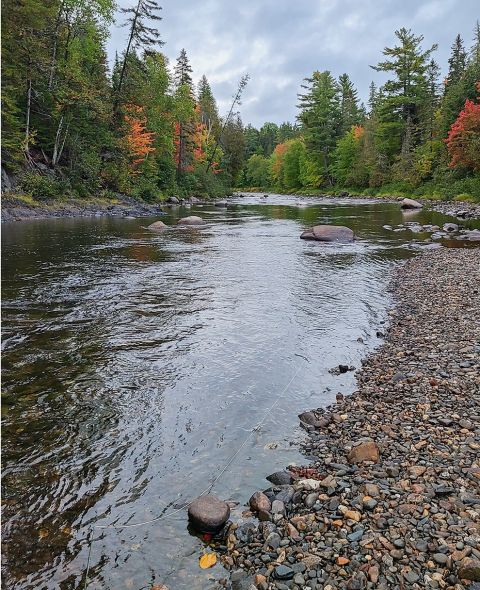
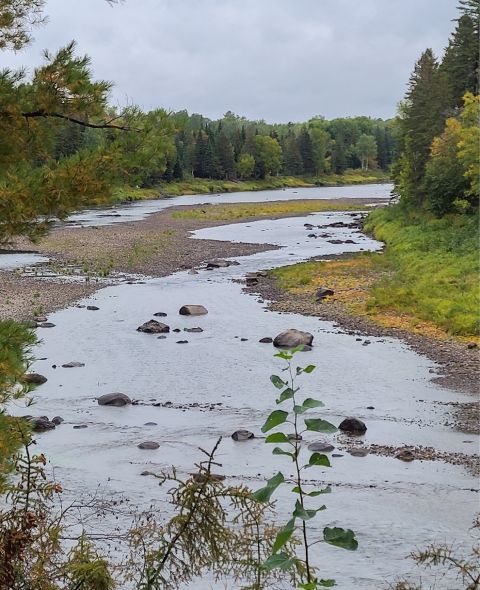
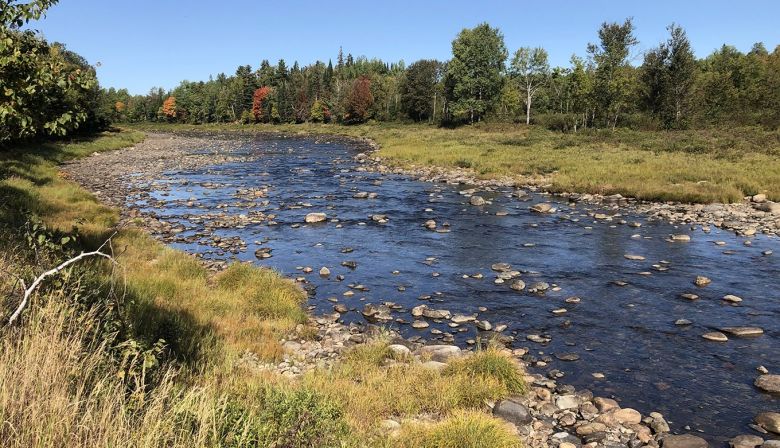
The rains that come with Teddy will hopefully bring an excellent raise in water to the desperately low NB salmon rivers. There are a variety of smaller salmon rivers in northern NB that get the bulk of their salmon run in the fall and rely on these fall rains, such as the Bartibog, Tabusintac, Benjamin, and others lesser known but all beautiful.
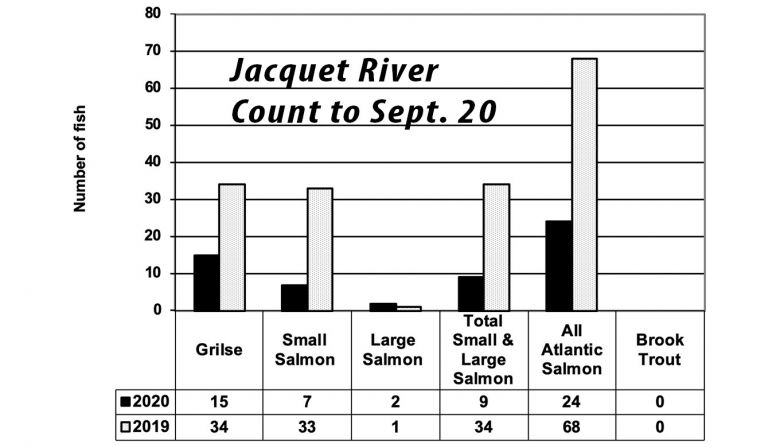
The Nepisiguit Salmon Association reporting on the Pabineau First Nation’s Counting Fence has 161 grilse and 103 large salmon to Sept. 17
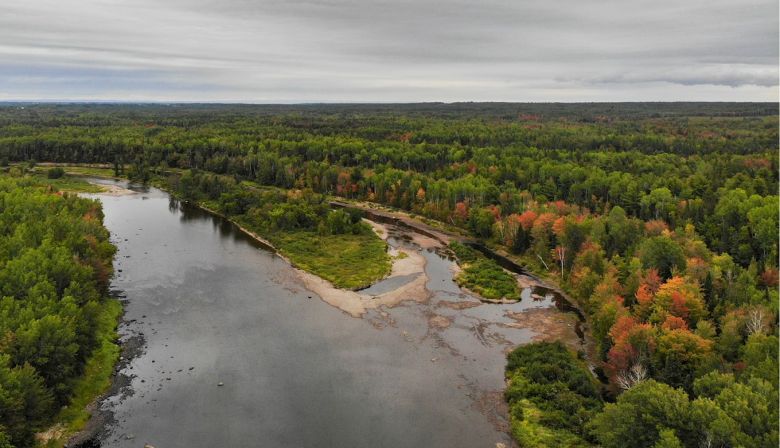

The data used for the Quebec river notes are sourced from various river websites, social media and Quebec government sources. Information can change without prior notification regarding prior year comparative figures.
La plupart des rivières demeurent en condition d’étiage, mais certaines rivières gaspésiennes ont bénéficié d’un « coup d’eau » la semaine dernière. Cependant, les pêcheurs sportifs bénéficient d’un bon succès de pêche et les prévisions météorologiques nous donne espoir d’une fin de saison offrant de meilleurs débits.
Les données utilisées dans ce rapport proviennent de divers sites web, des médias sociaux et de sources gouvernementales québécoises. Les informations peuvent changer sans avis au préalable en ce qui concerne les comparatifs des saisons précédentes.

Rivières York, Dartmouth, St-Jean Rivers
Most recent catch statistics are available at:
https://saumongaspe.com/peche-saumon-gaspe/statistiques.html
Les statistiques récentes des prises peuvent être consultées au :
https://saumongaspe.com/peche-saumon-gaspe/statistiques.html

Nine days are left in the 2020 season as of September 21st, a total of 2,666 fish migrated through the fishway (1,653 salmon and 1,013 grilse). Best total since 2016.
With eight days left in the 2019 season as of September 22nd, a total of 1,930 fish had been counted (1,213 large salmon and 717 grilse). Comparatively to September 23, 2018, 1,942 fish had been counted migrating into the river (1,056 salmon & 885 grilse).
To date to September 21st, 846 fish have been landed (274 salmon and 99 grilse released in addition to 158 salmon and 315 grilse harvested.
To September 22nd, 2019, 686 fish were reported landed comprised of 225 large salmon and 47 grilse released, 131 large salmon and 283 grilse harvested.
In 2018 to September 23rd, 475 fish had been reported landed (160 salmon & 54 grilse released, 261 grilse harvested). Abundance was insufficient to allow harvest of salmon.
La Matane se maintient très bien en date du 21 septembre, un total de 2 666 poissons ont migré par la passe migratoire (1 653 saumons et 1 013 madeleineaux). Meilleur rendement depuis 2016.
Comparativement au 22 septembre 2019, lorsqu’un total de 1 930 poissons avait été dénombré (1213 saumons et 717 madeleineaux). Comparativement au 23 septembre 2018, 1 942 poissons ont été dénombrés par le biais de la passe migratoire (1 056 saumons et 885 madeleineaux).
À ce jour, au 21 septembre, les pêcheurs ont signalé la capture de 846 (274 saumons et 99 madeleineaux relâchés en plus de 158 saumons et 315 madeleineaux capturés.
Au 22 septembre 2019, 686 poissons avaient été capturés, dont 225 saumons et 47 madeleineaux relâchés, 131 saumons et 283 madeleineaux capturés.
En 2018, l’abondance était insuffisante pour permettre la récolte de saumon, au 23 septembre, 475 poissons ont été capturés dont 160 saumons et 54 madeleineaux relâchés, 261 madeleineaux récoltés.
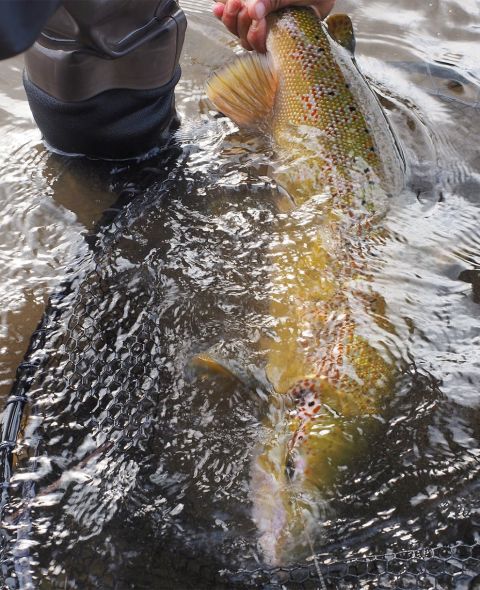
Rivière Matapedia River
Anglers have landed a total of 1,350 fish to September 21st, of which 810 were reported released and 540 harvested. Breakdown of the number of salmon and grilse harvested should be available later in October.
Reported angling results to September 22, 2019 indicated 1,199 fish had been landed comprising of 744 large salmon released and 455 grilse harvested.
Cumulativement, les pêcheurs ont signalé la capture de 1 350 poissons au 21 septembre, dont 810 relâchés et 540 récoltés. La ventilation du nombre de saumons et de madeleineaux récoltés devrait être disponible plus tard en octobre.
Les résultats de la pêche au 22 septembre 2019 indiquaient que 1 199 poissons avaient été capturés, dont 744 saumons relâchés et 455 madeleineaux récoltés.
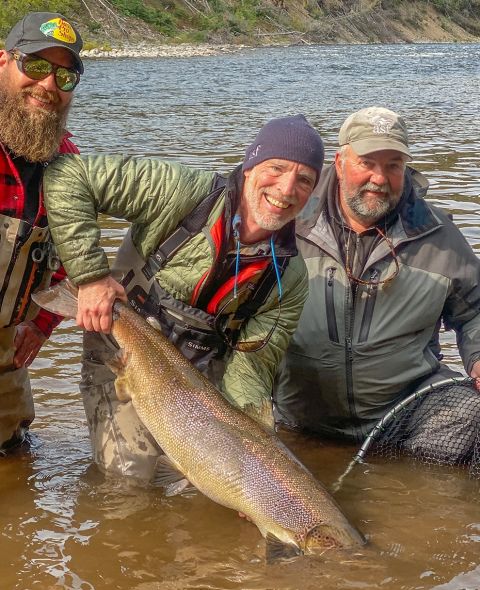
Rivière Bonaventure River
To September 19th, for the season, 1,034 fish have been reported landed (720 salmon released and 314 grilse harvested).
Last season, cumulatively to September 14th, 2019, 961 fish had been landed (771 salmon released, and 190 grilse harvested).
Comparatively for the season at the same date in 2018, 1,307 fish were reported landed (882 salmon released along with 425 grilse harvested).
Cumulativement au 19 septembre, 1 034 poissons ont été capturés (720 saumons relâchés et 314 madeleineaux récoltés). La saison dernière, cumulativement au 14 septembre 2019, 961 poissons furent capturés dont 771 saumons relâchés et 190 madeleineaux récoltés.
Comparativement à pareille date en 2018, 1 307 poissons ont été capturés dont 882 saumons relâchés et 425 madeleineaux capturés.

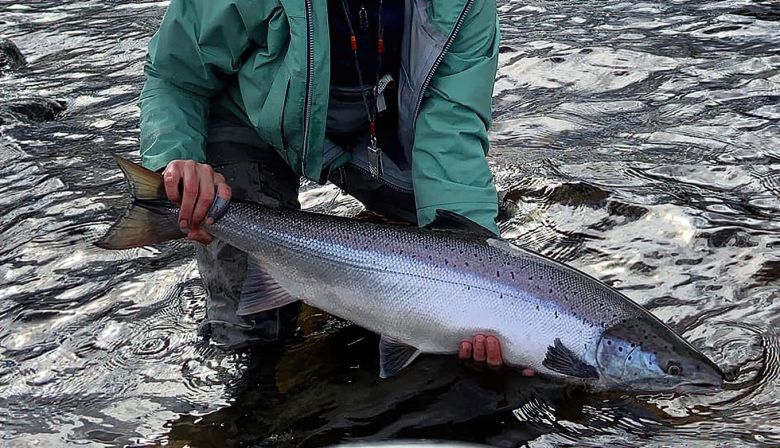
The lower sections of these three rivers remain open for a Fall Fishery until Oct 7.
In Labrador, all rivers officially closed to angling as of Sept. 15, and will remain closed until next season. Also, by now most fish counting facilities in the province have been closed for the season.
The latest DFO fishway counts, up to Sept 20th are available online at DFO’s web-site at:
http://www.nfl.dfo-mpo.gc.ca/nl/salmoncounts
Like most folks in NL, we were on edge for the past week or so wondering just how much rain Hurricane Teddy would drop on the province.
Now that the hurricane has passed through this region the short answer is that we received quite a lot. As a result, water levels rose sharply on most rivers throughout the province during this past week and in many cases reached extreme high levels.
The exception to the extreme high water were rivers in the western Newfoundland region. This region received far less rain and for the most part only reached medium to high levels.
The Big Three Rivers
The Humber River was spared much of the rain from the hurricane. As a result, the water levels on the Lower Humber River remain fairly good for angling, and the water temperature is cool, at approximately 13 C.
However, while the water level and temperature have remained good on the Lower Humber River the fishing has been rather slow during the past week.
Eric Crantford, who is an experience lower Humber angler, reports that he fished the river this past week and while there are still a few large fish around in this area they are difficult to entice to the fly. This could suggest that these are fish that have been in the river for a while and have seen a lot of flies drifting over them, since there was little evidence of any bright fish showing.
SCNL Board Member, Ken McLean fished the Gander River late last week and reports that the river was high at the time and still rising.
During his outing he only saw one salmon jump for the day. Ken believes that with all the high water at the time, a few fish were moving through the system but weren’t holding up.
Since Ken’s outing on the Gander last week, water levels on this river continued to rise sharply and are now at an extremely high level, running at about 160 cubic meters per second. Since the Gander River does not usually drop quickly the high water levels currently being experienced will likely persist for the next week or so making for very poor fishing up to the end of the season.
Not exactly what fishermen like Ken McLean and other anglers who participate in the annual fall fishery on the Gander were hoping for. But most seasoned angles have learned to take the bad with the good.
On the Exploits River, water levels rose a little during the past week but overall remain fairly stable on the lower section since water flows on this river are controlled upriver for hydro purposes and are released slowly. Reports indicate that there are still a few fish around but generally the fishing as been spotty during the past week.
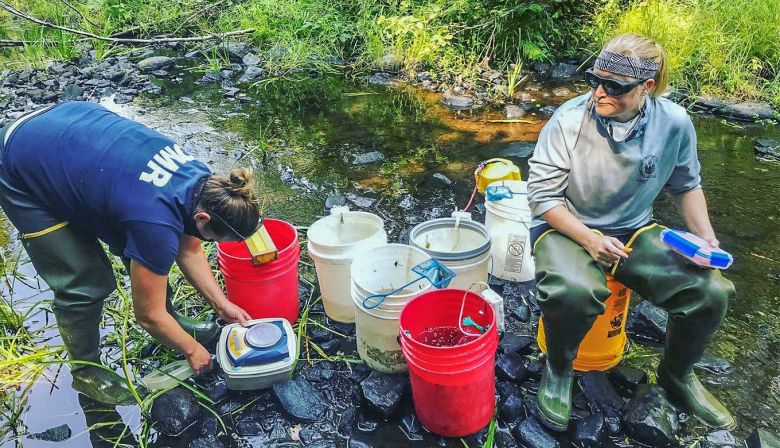
Sheepscot
ASF field personnel have been assisting DMR electrofishing in the Sheepscot watershed.
Water levels have still been extremely low however the biologists are still documenting high presence of young of the year and parr from wild spawning. Jen has also noted new suitable gravel downstream of the Coopers Mills Dam Removal site, continual benefits from that project emerging.
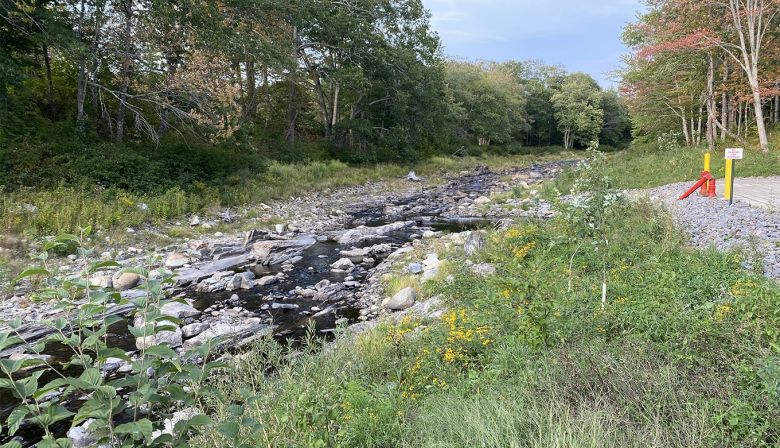
Penobscot
Jason Valliere, DMR Biologist, notes:
No new fish since the last update.
Current Atlantic salmon estimate is 1,453. This includes 604 male and 632 female large salmon, and 217 grilse. 221 fish (190 MSW and 31 Grilse) have been sent to the hatchery for broodstock.
Temperature in the river has dropped to 13.7C (57F) at mid-week.
Counts have not been adjusted for in-season recaptures based on PIT tag, radio tag, or other factors. Counts will be adjusted as data become available. Next update will be in 2 weeks.
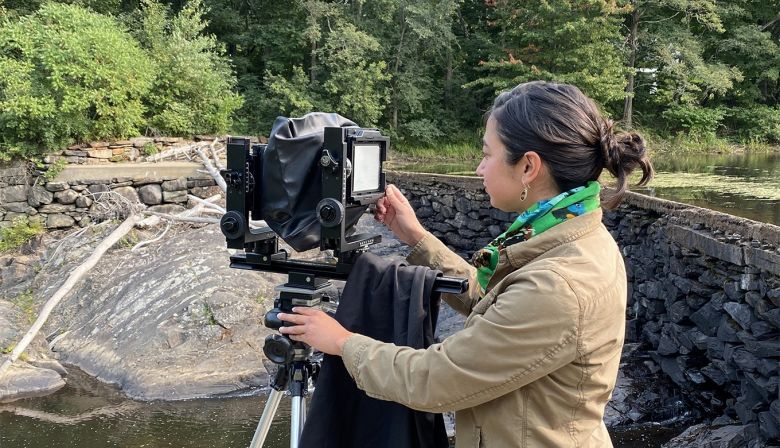
Temple Stream
An historian, Bruce Harvey, is preparing historical and archival material on the Walton’s Mill Dam prior to its removal. Maranda Nemeth has been providing assistance to him.